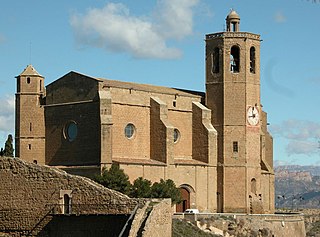
Balaguer is the capital of the comarca of Noguera, in the province of Lleida, Catalonia, Spain. It is located by the river Segre, a tributary to the Ebro. The municipality includes an exclave to the east. Balaguer also has a sister city in the western United States, Pacifica, California.
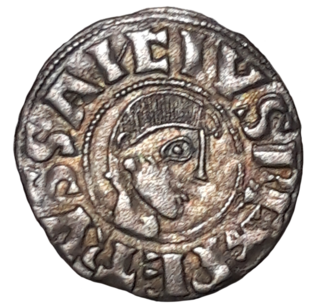
Peter I was King of Aragon and also Pamplona from 1094 until his death in 1104. Peter was the eldest son of Sancho Ramírez, from whom he inherited the crowns of Aragon and Pamplona, and Isabella of Urgell. He was named in honour of Saint Peter, because of his father's special devotion to the Holy See, to which he had made his kingdom a vassal. Peter continued his father's close alliance with the Church and pursued his military thrust south against bordering Al-Andalus taifas with great success, allying with Rodrigo Díaz de Vivar, known as El Cid, the ruler of Valencia, against the Almoravids. According to the medieval Annales Compostellani Peter was "expert in war and daring in initiative", and one modern historian has remarked that "his grasp of the possibilities inherent in the age seems to have been faultless."

The County of Urgell is one of the historical Catalan counties, bordering on the counties of Pallars and Cerdanya.

Ramon Berenguer IIIthe Great was the count of Barcelona, Girona, and Ausona from 1086, Besalú from 1111, Cerdanya from 1117, and count of Provence in the Holy Roman Empire, from 1112, all until his death in Barcelona in 1131. As Ramon Berenguer I, he was Count of Provence in right of his wife.

The Diocese of Urgell is a Latin Church diocese of the Catholic Church in Catalonia (Spain) and Andorra in the historical County of Urgell, with origins in the fifth century AD or possibly earlier. It is based in the region of the historical Catalan County of Urgell, though it has different borders. The seat and Cathedral of the bishop are situated in la Seu d'Urgell town. The state of Andorra is a part of this diocese.

This is a list of the counts of Urgell, a county of the Principality of Catalonia in the 10th through 13th centuries.

Berenguer Ramon I [Berengar Raymond I], called the Crooked or the Hunchback, was the count of Barcelona, Girona, and Ausona from 1018 to his death.
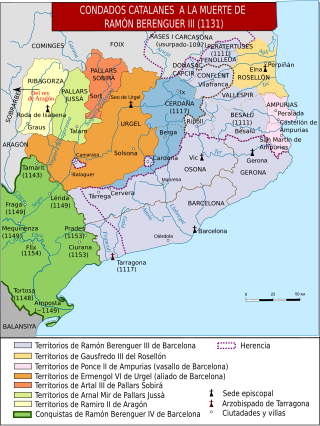
Ermengol or Armengol VI, called el de Castilla, was the Count of Urgell from 1102 until his death. He was the son and successor of Ermengol V and María Pérez, daughter of Count Pedro Ansúrez, Lord of Valladolid, who became the young Ermengol's tutor when he was orphaned in 1102.
Ermengol or Armengol V (1078–1102), called El de Mollerussa, was the Count of Urgell from 1092 to his death. He was the son of Ermengol IV and his first wife, Lucy (Lucía) of Pallars.
Ermengol or Armengol IV (1056–1092), called el de Gerb or Gerp, was the Count of Urgell from 1066 to his death. He was the son of Ermengol III and Adelaide.
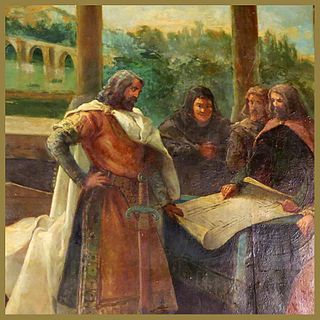
Pedro Ansúrez was a Castilian nobleman, count of Liébana, Saldaña and Carrión in the closing decades of the eleventh century and the opening decades of the twelfth. He is considered the founder and first lord of Valladolid.
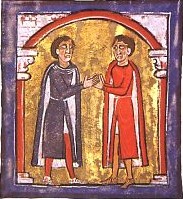
Ermengol or Armengol III, called el de Barbastro, was the Count of Urgell from 1038 to his death. He was the son of Ermengol II, Count of Urgell and his wife Velasquita "Constança", probably the daughter of Bernard I, Count of Besalú.

Ermengol or Armengol II, called the Pilgrim, was the Count of Urgell from 1011 to his death. He was the son of Ermengol I, Count of Urgell and his second wife, Guisla. Still a child when he succeeded his father, who was killed in battle against the Moors, he was put under the regency of his uncle Ramon Borrell, Count of Barcelona until 1018.
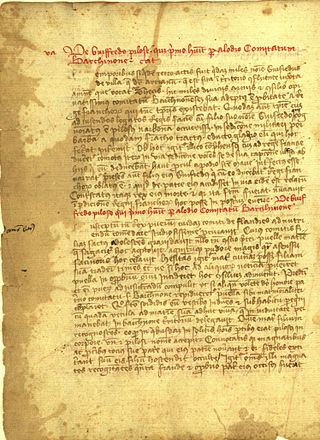
The Gesta comitum Barcinonensium is a Latin chronicle composed in three stages by some monks of Santa Maria de Ripoll and recounting the reigns of the Counts of Barcelona from Wifred I (878–97) to James II (1291–1327), as late as 1299. It is the fawning history of the dynasty known as the House of Barcelona. In presenting the rulers of the county of Barcelona as the descendants of Charlemagne, the monks sought to justify their independent policy with respect to the King of France, their nominal sovereign. The Gesta is the chronological backbone.
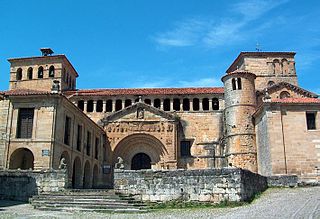
Rodrigo González de Lara was a Castilian nobleman of the House of Lara. Early in his career he ruled that half of Asturias allocated to Castile. He was faithful to the crown throughout the reign of Queen Urraca (1109–26), during which time he was married to the queen's half-sister and ruled a large part of the old County of Castile. He and his elder brother, Pedro González, led the opposition to Alfonso VII early in his reign (1126–57). He led a revolt in 1130 and was exiled in 1137. He was a leader in the Reconquista—about which the contemporary Chronica Adefonsi imperatoris has much to say—and also took part in the military activities of the Crusader states on two occasions. He travelled widely throughout Spain, but ended his days in Palestine.
Aeci, Bishop of Barcelona from 995, was a warrior-prelate in the age of the Peace and Truce of God. Besides military endeavours, mainly reconquista, his episcopate was taken up with the repopulation of the Penedès in the south of the diocese, on the frontier with al-Andalus.

Joan Terès i Borrull was presbyter of Vic, auxiliary bishop of Morocco (1575–1579), bishop of Elne (1579–1586) and of Tortosa (1586–1587), and archbishop of Tarragona (1587–1603). He was viceroy of Catalonia (1602–1603) and councillor of King Philip III of Spain.
Fernando García de Hita was a Castilian nobleman, traditionally considered the founder of the noble House of Castro. He governed the lordships of Hita and Guadalajara, and frequently attended the royal court under King Alfonso VI and Queen Urraca.
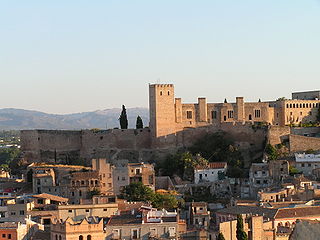
The siege of Tortosa was a military action of the Second Crusade (1147–49) in Spain. A multinational force under the command of Count Raymond Berengar IV of Barcelona besieged the city of Tortosa, then a part of the Almoravid Emirate, for six months before the garrison surrendered.
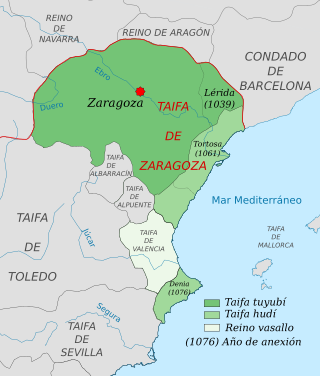
The Taifa of Lérida was a factional kingdom (ṭāʾifa) in Muslim Iberia between 1039/1046 and 1102/1110. Based on the city of Lérida, the ṭāʾifa was not an independent state throughout this period but was sometimes a part of the larger ṭāʾifa of Zaragoza ruled by a governor (wālī).